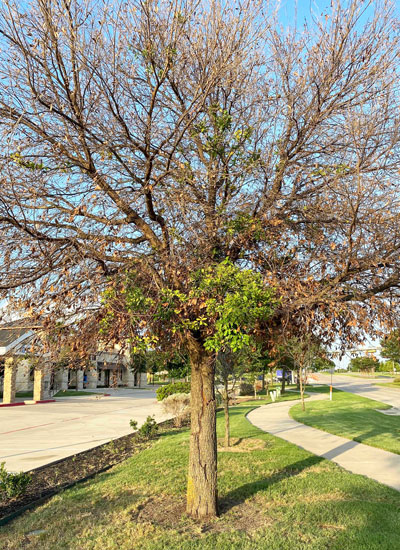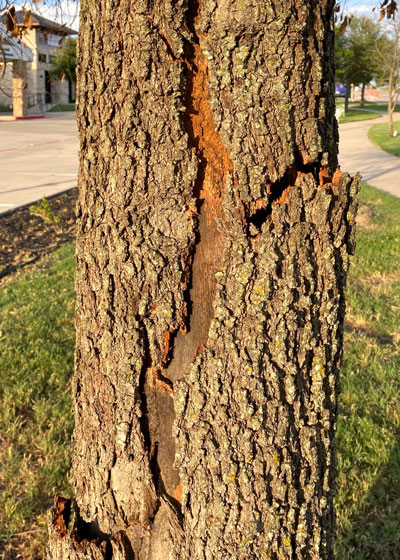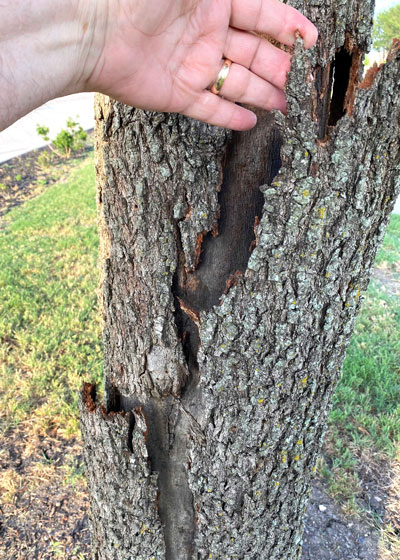Can this live oak be saved?
The questions about whether live oaks would survive the cold of mid-February about wore me out. Dozens per day. I finally asked the advice of the Texas AgriLife Extension Service and Texas A&M Forest Service, also of the Texas Nursery and Landscape Association and several other professional tree-growing friends.
We were all of the same mind: most oaks would recover if we’d just leave them alone. Some might lose some end growth of their branches to freeze die-back, and some might show “radial shake,” the name given to vertical cracks through the bark and into the wood. But few would actually be killed. That was their opinion, and so far it’s held pretty much true.

However, as my wife and I were running errands a few days ago I saw this tree in a commercial parking lot alongside a major street in McKinney. We turned around so I could get a closer look and take a couple of photos to share with you here.
This is a classic example of severe freeze damage. The bark has separated completely and will soon fall to the ground. The wood beneath the bark is drying and cracking.
Because the phloem tissue that carries manufactured sugars from the leaves down to the roots is also lost when bark separates, the root system will soon die and this tree will be lost entirely.
I’m not suggesting anyone should rush to judge other oaks that aren’t hurt this badly. But a tree in this kind of condition isn’t going to come back. It could be cut and removed and a new tree brought in to replace as wished.
It’s amazing what damage this past winter’s cold has done – and continues to do.


